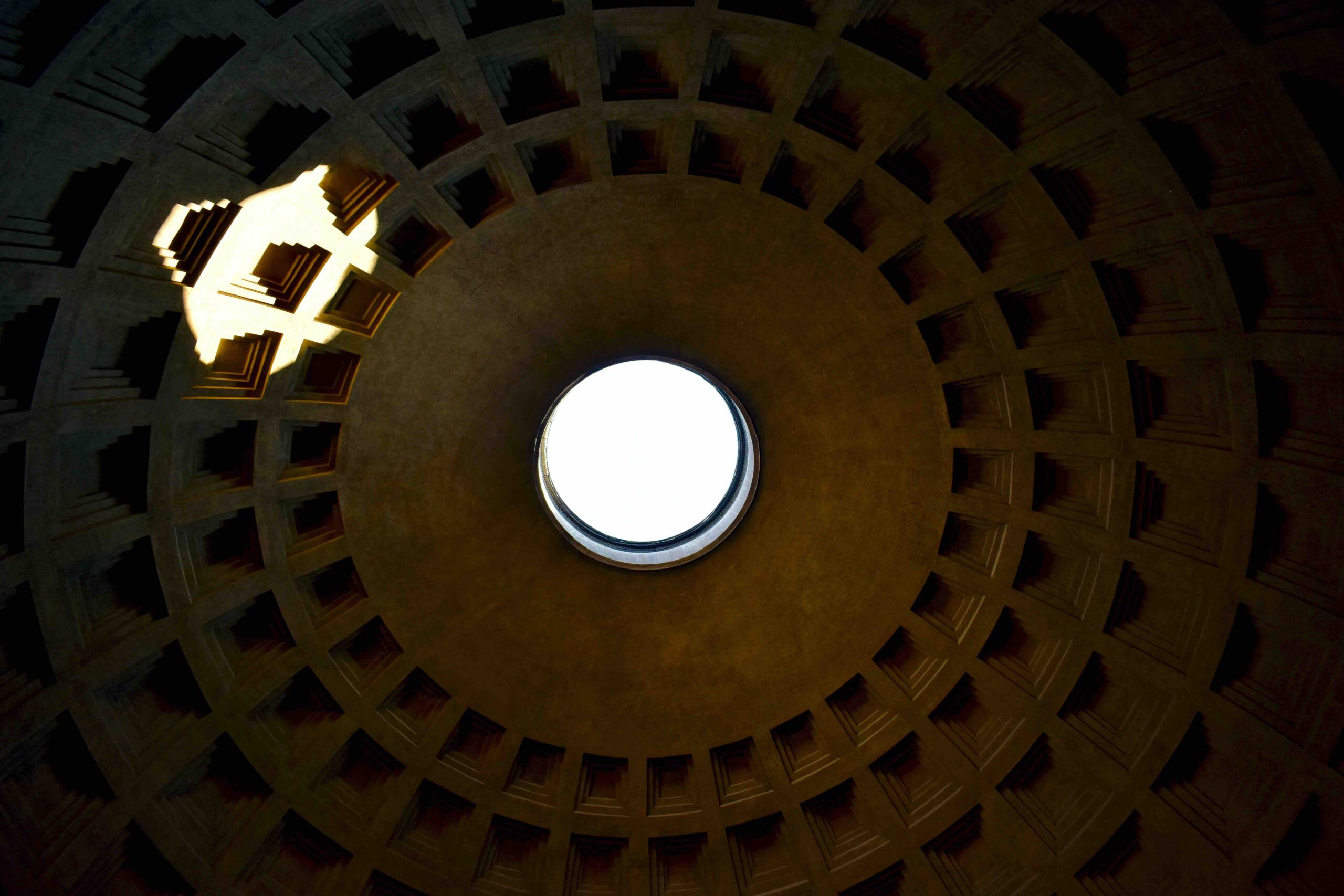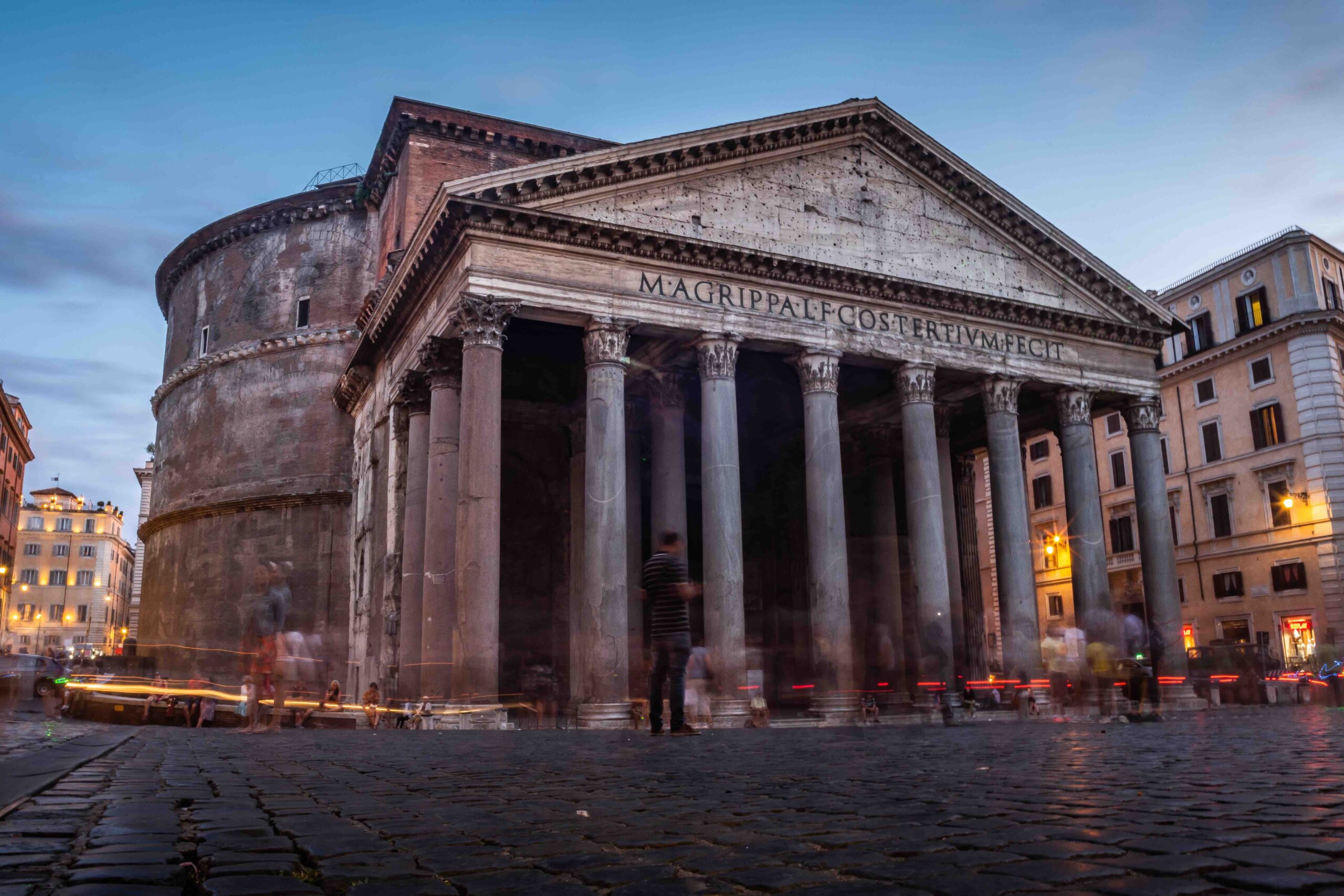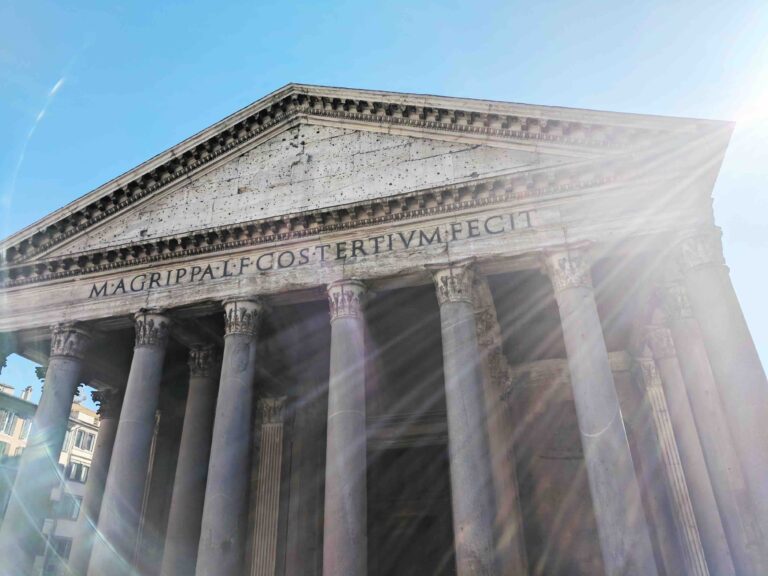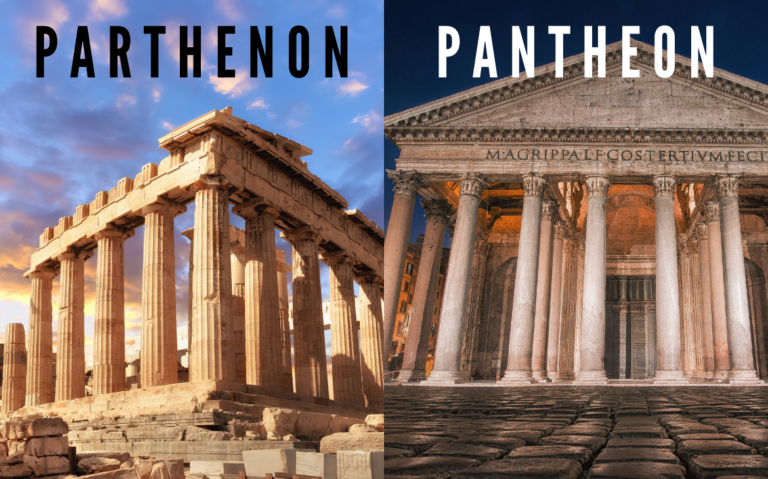Located in the heart of Rome, the Pantheon stands as a remarkable testament to the architectural genius and grandeur of ancient Rome. With its towering dome and imposing facade, this magnificent structure has captured the imaginations of visitors for centuries. Let us delve into the history, design, significance, and fascinating anecdotes surrounding the Pantheon, uncovering the secrets of this iconic Roman landmark.
Table of Contents
ToggleHistory
The Pantheon, meaning “temple of all the gods,” was originally built by Marcus Agrippa in 27 B.C. as a place of worship. However, the current structure we see today is the result of a remarkable rebuilding project that took place under the orders of Emperor Hadrian in 126 A.D. The Pantheon we admire today is a testament to Roman engineering and the endurance of its construction.
Design
The Pantheon’s most striking feature is its dome, which is the largest unreinforced concrete dome in the world. The dome has a diameter of 43.3 meters (142 feet), equal to the height from the floor to the oculus, the open central part of the dome. This oculus serves as the only source of natural light, creating an awe-inspiring effect as the sunlight filters through and illuminates the interior.
The exterior of the Pantheon is equally impressive. Its massive Corinthian columns stand proudly, supporting a triangular pediment adorned with intricate sculptures. The front portico features eight columns at the sides and two additional ones at the entrance, adding to the grandeur of the structure.
Interior & The Oculus
Upon stepping inside the Pantheon, visitors are instantly captivated by its harmonious and elegant interior design. The vast open space of the rotunda is a breathtaking sight. The dome, with its coffered ceiling, creates a sense of height and openness. The marble floors and walls, adorned with statues and inscriptions, further enhance the sense of grandeur.
At the apex of the dome, not only allows natural light to filter in but also acts as a symbolic connection between the temple and the divine. When it rains, the water is drained through hidden channels in the floor, adding to the ingenious engineering of the structure.

Significance
The Pantheon’s religious significance cannot be understated. Originally dedicated to all the gods of ancient Rome, it later served as a Christian church and is still in use today. Its transformation from a pagan temple to a Christian place of worship speaks volumes about Rome’s evolving religious landscape and the adaptability of its architectural marvels.
The Pantheon’s architectural achievements also continue to inspire designers and engineers. Its dome, in particular, has become an enduring symbol of strength and beauty. Countless structures around the world have drawn inspiration from the Pantheon’s design, including the U.S. Capitol building in Washington, D.C.
The Pantheon is also renowned for its remarkable construction techniques. The architects ingeniously used lighter materials for the upper parts of the dome, gradually transitioning to heavier materials at the base. This engineering feat ensured structural stability and durability, allowing the Pantheon to withstand the test of time.
Visiting the Pantheon
For those planning a visit to the Pantheon, there are a few tips to make the most of your experience. Firstly, it’s advisable to arrive early in the morning or later in the afternoon to avoid the crowds. The Pantheon is a popular tourist destination, and visiting during off-peak hours can provide a more peaceful and immersive experience.
As you explore the interior, take your time to appreciate the architectural details and the serene ambiance. Gaze up at the oculus and observe the interplay of light and shadow. Marvel at the precision of the construction and the exquisite craftsmanship on display.
Be sure to notice the tombs of some prominent figures housed within the Pantheon. Among them is Raphael, the renowned Italian painter and architect, who is buried in the Pantheon’s Rotunda. His tomb serves as a poignant reminder of the artistic contributions of this influential figure.
After your visit to the Pantheon, take a stroll through the nearby Piazza della Rotonda, where you can relax at a café and soak in the vibrant atmosphere of Rome. The nearby Santa Maria sopra Minerva, a stunning church housing masterpieces by Michelangelo and Bernini, is also worth a visit.
Conclusion
The Pantheon is a true marvel of ancient Rome. Its architectural brilliance, historical significance, and religious transformations make it a must-visit destination for travelers from around the world. As you stand beneath its soaring dome and admire its timeless beauty, you can’t help but feel a profound sense of awe and wonder at the ingenuity of the ancient Romans. The Pantheon serves as a captivating reminder of the enduring legacy of Roman civilization and its contributions to the world of art and architecture.





